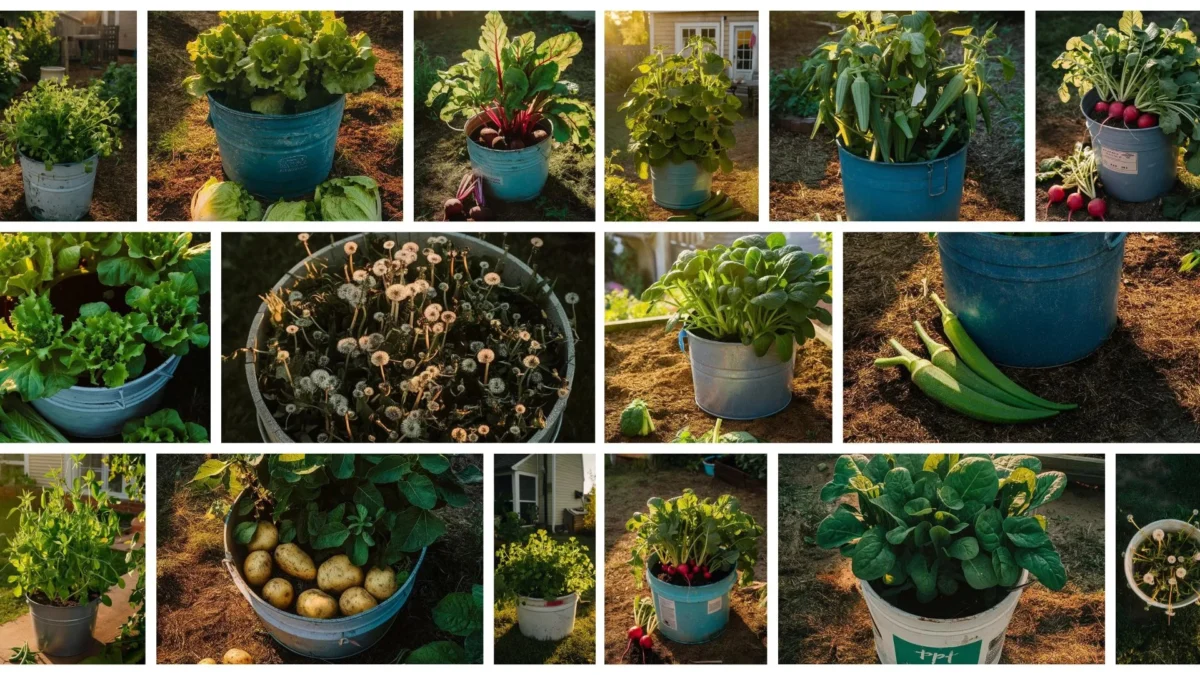There’s nothing quite like the taste of fresh, homegrown produce picked right from your own garden.
But what if you don’t have enough space for traditional in-ground beds? Enter bucket gardening – a smart way to grow an amazing array of veggies and herbs in a compact area.
With just a few food-grade buckets and the right soil, you can cultivate a bountiful harvest of nutritious edibles on your patio, balcony, or any sunny spot.
In this guide, we’ll cover over 35 delicious crops perfect for bucket gardening and share pro tips to ensure your container crops thrive.
Choosing the Right Buckets
The key to successful bucket gardening starts with selecting proper containers.
Food-grade 5-gallon buckets are an ideal size for many crops, providing enough soil volume for healthy root growth without being too heavy.
10-gallon buckets work well for larger veggies like tomatoes or cucumbers.
Avoid using any buckets that previously contained harsh chemicals.
Hack: Save money by asking for free buckets from bakeries, restaurants or paint stores instead of buying new ones.
Creating the Perfect Potting Mix
Regular garden soil alone is too dense for buckets, restricting air and moisture flow to roots.
Instead, make your own lightweight potting mix by combining equal parts compost, coconut coir or peat moss, and perlite or vermiculite.
This nutrient-rich, well-draining blend provides the ideal growing medium for bountiful bucket crops.
Planting and Care Tips

You can start most bucket crops from seed or transplants.
When direct sowing, use a seed-starting mix and cover according to packet instructions.
For transplants, carefully dig a hole allowing rootball to fit snugly.
Water seedlings well.
Hack: Use toilet paper or paper towel rolls cut into thirds laid on their sides in the soil to make perfect seed trenches. Or cut x-shapes in the rolls to hold transplants upright.
35+ Veggies and Herbs for Prolific Bucket Gardens
Tomatoes
Go for bushy varieties like Roma, Patio or cherry types.
Add a tomato cage or stake for support as they grow.
Pro tip: Bury stem deeply when transplanting – roots will sprout from the buried stem!


Beans
Bush varieties like Contender work better in buckets than pole types.
Sow seeds 1″ deep, keeping cooler with mulch as temps rise.


Carrots
With their roots contained to the bucket, carrots are perfect for container gardening.
Sow seeds 1⁄4″ deep in loose, rock-free soil.

Ginger
An awesome tropical treat to grow!
Plant grocery ginger rhizomes horizontally 8″ deep with growth buds up.


Onions
Choose smaller bulbing types like bunching onions or potato onions.
Plant starts 1″ deep and 4″ apart.
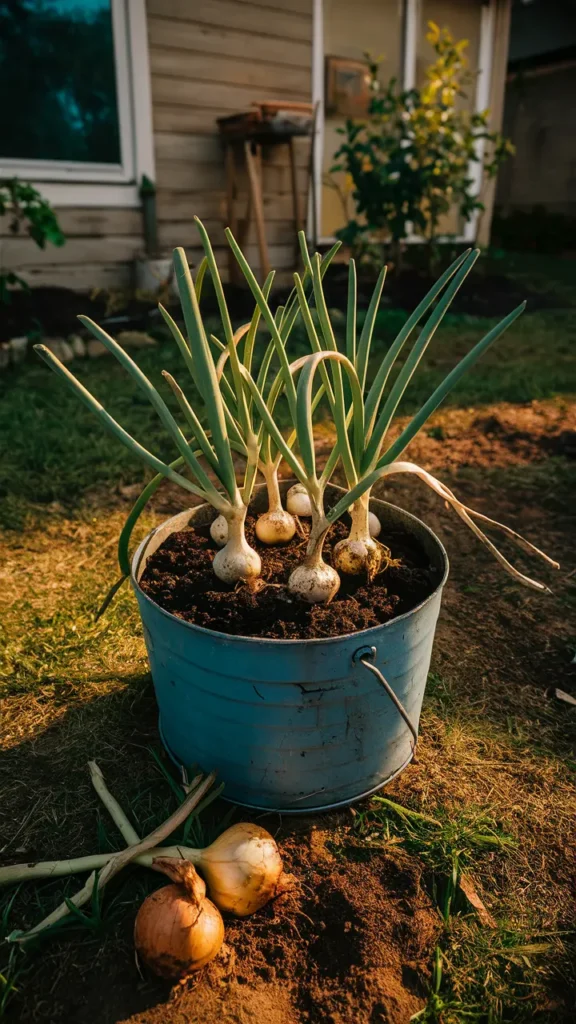

Peppers
All varieties of sweet, hot, bell and banana peppers do well.
Try placing buckets along a sunny south-facing wall.

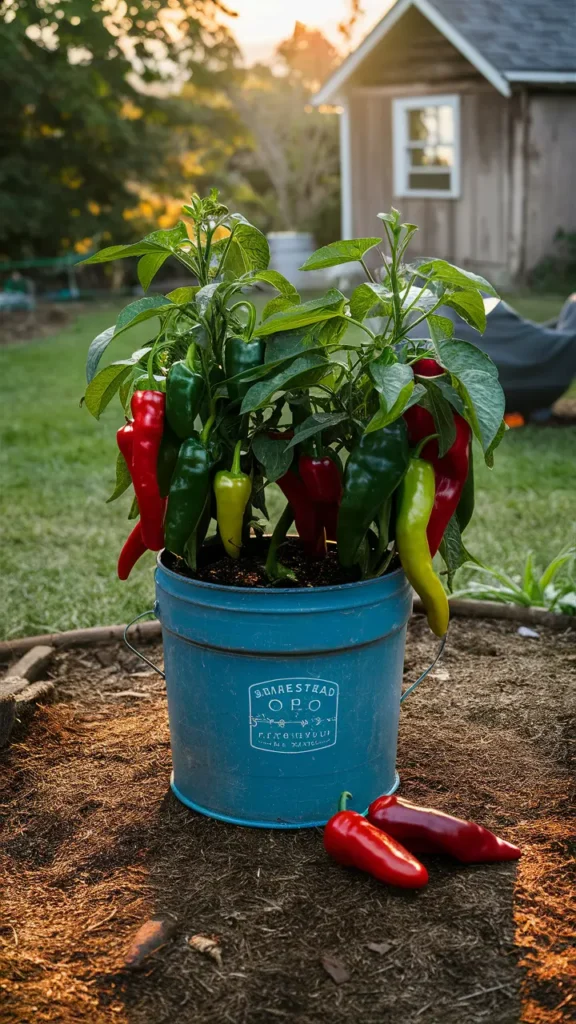
Cherry Tomatoes
The prolific producers yield nonstop once they start!
Place in full sun and be ready to harvest often.

Okra
Heat-loving okra thrives in buckets.
Soak seeds overnight before sowing 1″ deep and 12″ apart for best pod production.


Beets
Beets not only give you tasty roots, but their greens are also delicious!
Thin seedlings to 3″ apart.


✓ Safety First: Learn to shield your loved ones effectively.
✓ Essential Preparedness: Comprehensive checklists tailored for you.
✓ Take Command: Build resilience and confidence for any scenario.
Cucumbers
Go for bush types made for containers like Patio Snacker.
Provide a small trellis or stake for vines.


Lettuce
Grow a cut-and-come-again lettuce patch by succession sowing seeds every 2 weeks.
Leaf lettuces are ideal for buckets.


Spinach
Another cut-and-come-again green, spinach provides nutritious harvests in containers with its spreading growth habit.

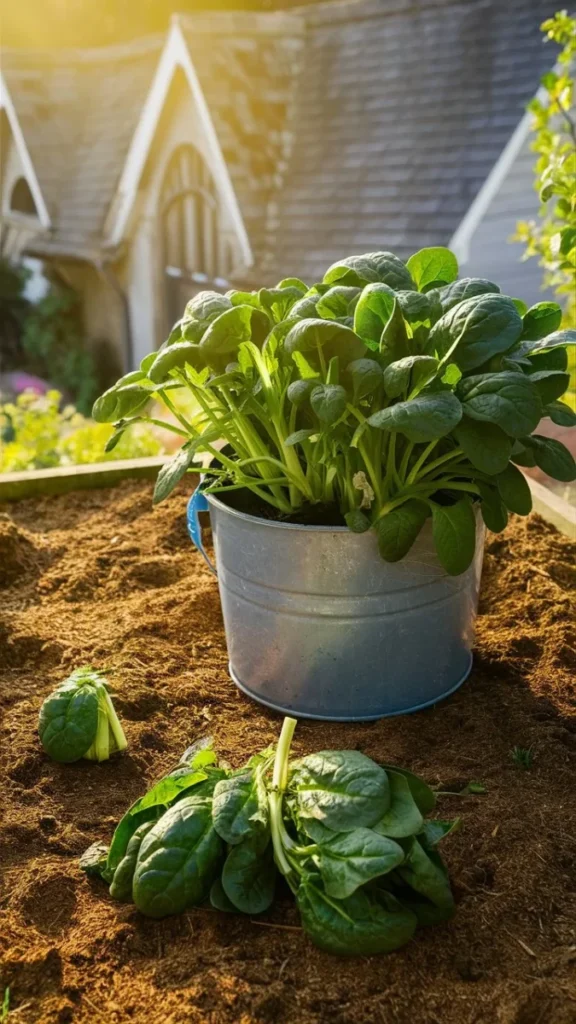
Peas
Dwarf pea varieties like Little Marvel allow you to grow satisfying pea harvests vertically on a small trellis in buckets.


Broccoli
While broccoli appreciates more root space, you can grow one head per 5-gal bucket sowing seeds or planting starts.
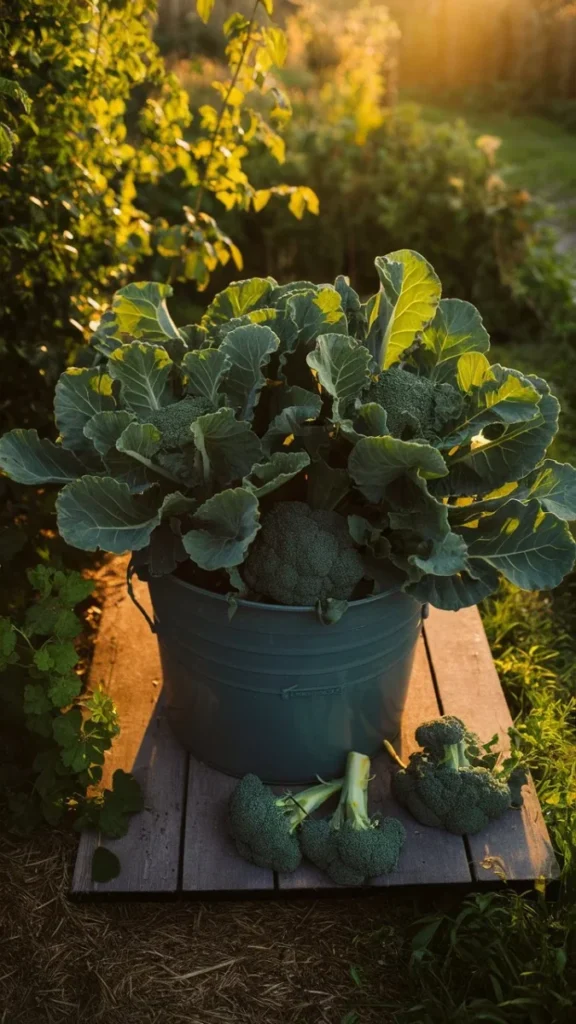

Radishes
One of the quickest crops around, radishes can go from seed to crisp, peppery harvest in just 3 weeks!
Sow every 10 days for continual pickings.
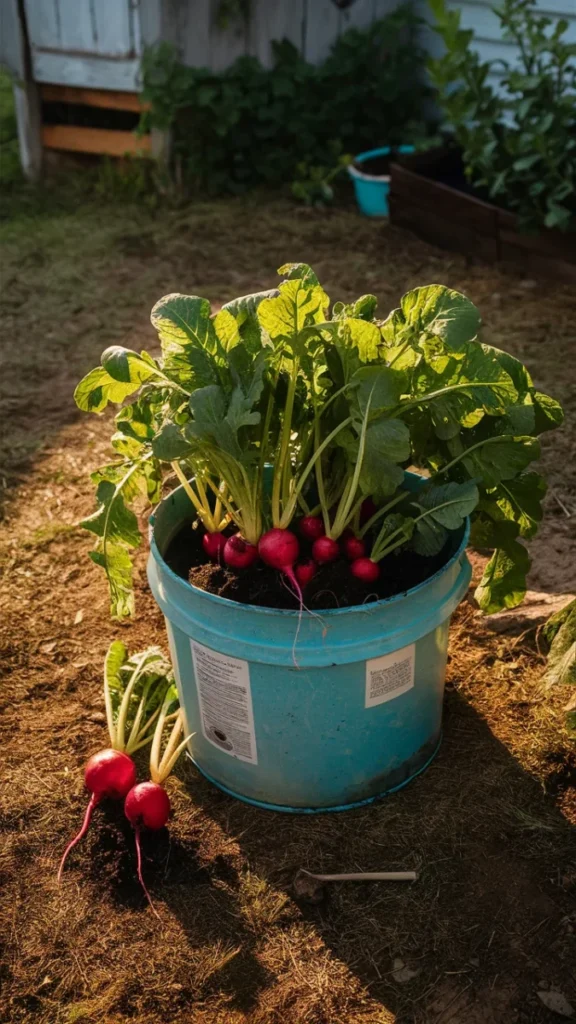

Potatoes
Short on garden space for potato plants?
Simply fill a bucket with soil, burying seed potato pieces 12″ deep. Potatoes will grow in the soil volume.


Swiss Chard
These nutrient-dense leafy greens grow in an attractive funnel shape perfect for buckets.
Sow and harvest outer leaves.


Kale
Robust kale thrives when planted about 3″ apart in buckets.
Harvest the lowest leaves first as they grow.


Turmeric
As an added benefit, turmeric’s lush leaves make an ornamental display while producing prized edible rhizomes.


Garlic
Got a stash of grocery garlic bulbs?
Simply break apart cloves and plant 6″ deep and apart to grow gourmet garlic.
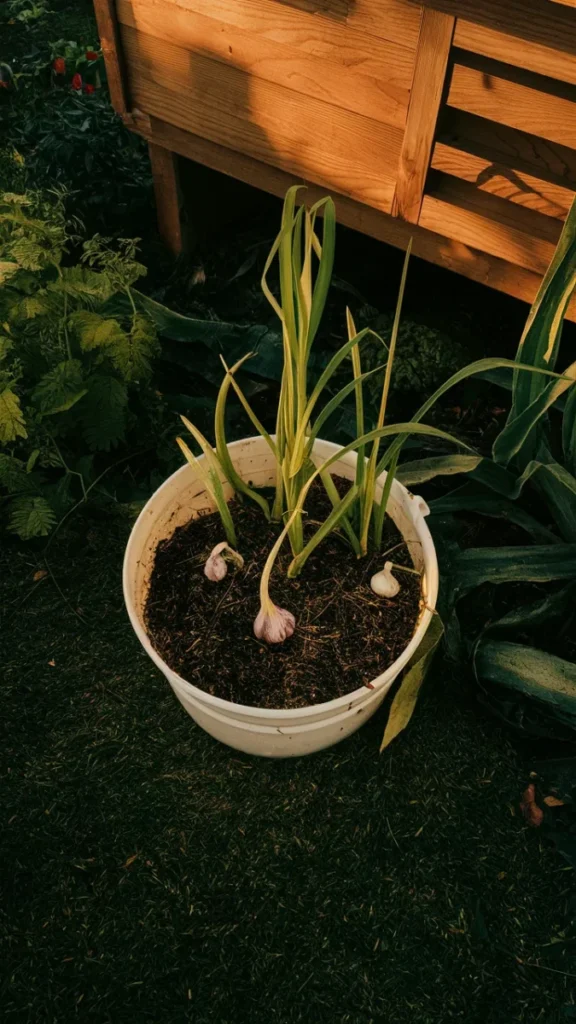

Mint
While mint spreads aggressively in gardens, containing it to a bucket helps control growth.
Give it a deep planting.


Parsley
Grow flat or curly parsley near the edge of buckets where you can snip off leaves for cooking whenever needed.


Basil
Easily grow generous amounts of fresh basil by planting 1-2 plants per 5-gal bucket.
Keep soil moist but well-drained.

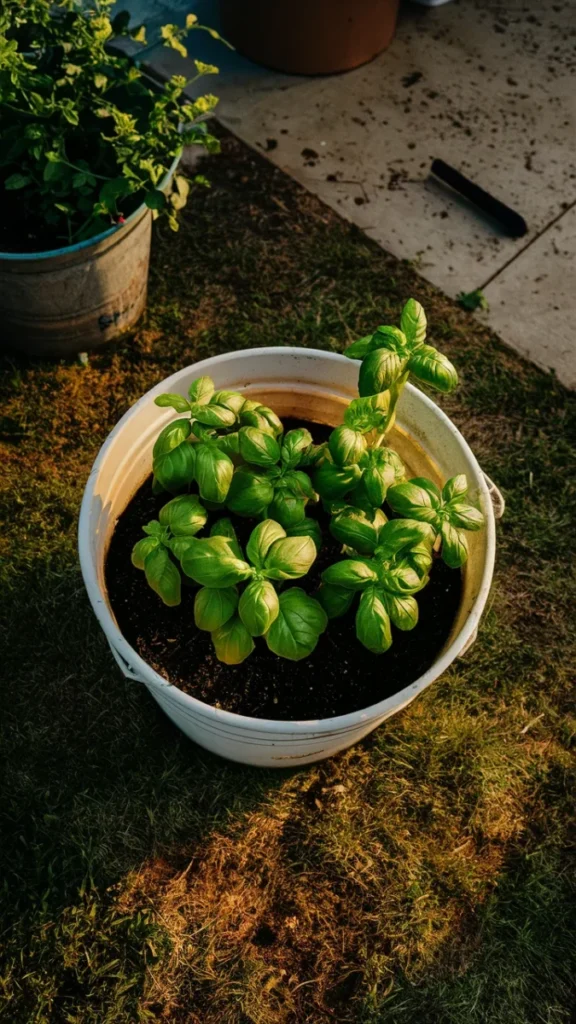
Rosemary
An essential herb for many cuisines, rosemary’s sturdy stems and aromatic needles arise from one small bucket plant.


Dill
Make sure to reseed dill every few weeks to maintain a steady supply for pickling or cooking with its feathery leaves.


Sage
This hardy, shrubby perennial herb only needs one 5-gallon bucket to yield plenty of velvety leaves for seasoning.


Oregano
Fill a bucket with this Mediterranean must-have oregano, taking periodic prunings of the trailing stems for pizza, pasta, etc.
Thyme
Thyme’s tiny leaves and stems pack huge flavor for marinades, stews and more. One plant fills a 5-gallon nicely.
Coriander/Cilantro
Enjoy a continuous supply of both cilantro’s zesty leaves and coriander seeds by routinely replanting.
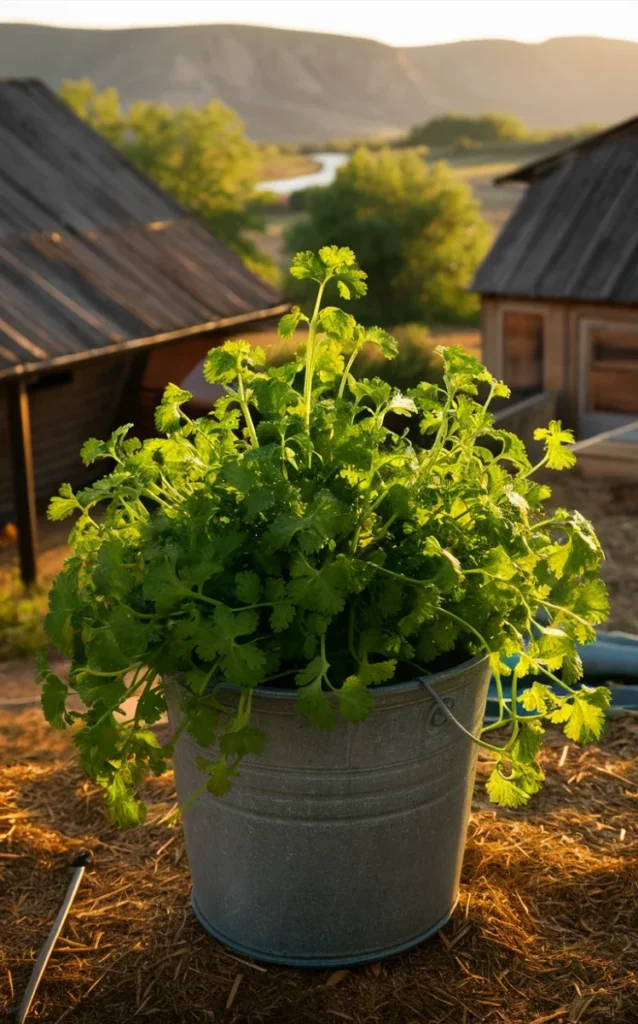

Dandelion
Often overlooked, the greens are packed with nutrients. Plant in a bucket to control spreading and harvest leaves.


There are so many more fun and funky crops you can plant! Experiment and have fun creating your own unique bucket garden.
Designing & Arranging Bucket Gardens
Get creative arranging different sized buckets in interesting formations like pyramids, zigzags, or spirals.
Cluster complementary plants together following companion planting principles.
Or line up rows of matching buckets on a patio or porch ledge for an eye-catching veggie display.
Hack: Drill drainage holes in the higher part of bucket sides to allow easier access for watering from above.
Troubleshooting Issues
Pests – Use row covers or insecticidal soaps for foliage pests. Fill bucket undersides with gravel to deter slugs and snails.
Diseases – Promote air circulation and avoid overhead watering. Remove affected plant material promptly.
Nutrient deficiencies – Side-dress plants by topdressing potting mix with compost or use liquid fertilizers.
Harvesting Your Buckets
Harvest bucket crops at their peak using pruners or scissors.
For greens like lettuce and spinach, take just a few outer leaves per plant so the rest can continue producing.
Root crops like beets and carrots can be pulled entirely once tops reach 6-8″ tall.
Legumes like peas or beans are ready to pick once pods have filled out. Different crops have different prime picking times, so research accordingly.
Hacks: Use masking or painters tape to make plant labels you can easily update. Reuse larger harvested buckets as mini raised beds.
With the right varieties, care and creativity, you can enjoy an incredibly productive bucket garden tailored to your tastes.
Get growing and start savoring the unbeatable flavors of home-grown goodies straight from your container crops!

